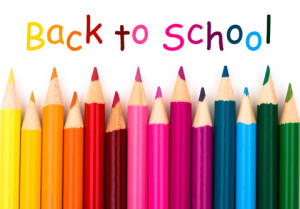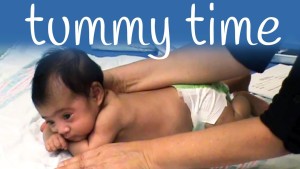
Dear Chesterbrook Families,
Welcome to the start of our 2015-2016 school year at Chesterbrook Academy! We would like to thank our “old” families for their continued trust and support in Chesterbrook Academy to provide the best possible education and nurturing environment for your children. We would like to welcome “new” familes into our Chesterbrook Academy community and thank you for allowing us to be a part of your child’s journey through preschool. It is truly an honor to be allowed to be such a valuable part of your children’s lives each and every day!
September is a busy month for all of us. Teachers have spent time preparing their classrooms in anticipation of their new students starting… students have been learning new routines and getting to know new teachers… and parents have been adapting to new routines too!
Here are some of the highlights for September:
September 7th- School Closed~ Labor Day
September 9th- Teddy Bear Day~ Bring your favorite teddy bear to school
September 10th- Grandparent’s Snack at 3:15pm *All grandparent’s are invited*
September 16th- Back-to-School Night from 6:15-7:30 *This is a parent only event*
September 21st- Picture Day
September 25th- Pajama Day
Here’s to a wonderful September! Please see Kasey, Kelly or your child’s teachers with any questions.
Sincerely,
Kasey and Kelly

Would you like to stop writing a check each week? Avoid late payment fees?
Sign up for automatic withdrawal and never have to worry about writing another check! See Kasey or Kelly for the form… It’s that simple!
From Our Education Department
Developing Balance Skills in Young Children
From Tummy Time to Bike Riding
Balance is a fundamental skill necessary for maintaining controlled positions, such as sitting in a chair, or engaging in physical activities like running or riding a bike. Having balance makes motor skill development easier, reduces the risk of injury, and helps children focus on academic tasks.
Our Nobel Learning Education team stays up to date with the latest research to ensure that our Links to Learning curriculum exceeds childhood learning standards. The Links to Learning curriculum was enhanced last fall to include a greater focus on balance, a building block for skills such as hand-eye coordination, muscular strength and body awareness.

INFANTS:
In the classroom: Tummy time promotes neck, back and abdominal strength needed for infants to eventually push up, roll over, sit up and crawl. Teachers keep infants engaged by using activity mats or plush blocks.
At home: Place your baby on his stomach and shine a flashlight near him. Once you have captured his attention, shine the light in a rhythmic pattern. For older infants, encourage your baby to move or crawl toward the light.
TODDLERS (ages 1-2):
In the classroom: During the toddler years, children make major strides in balance and coordination. Teachers play music and encourage students to move their bodies in different ways while maintaining their balance.
At home: Push and pull toys require children to use core balance and arm strength, which can be difficult for new walkers. Place a small wagon or toy shopping cart and a pile of blocks on the floor. Show your child how to fill the cart with blocks. He will enjoy pulling or pushing the blocks around the room.
BEGINNERS (ages 2-3):
In the classroom: Sitting cross-legged, or as we say with the children “criss-cross applesauce,” is an important developmental skill for two year olds. Teachers encourage children to sit criss-crossed anytime they are playing on the floor. Sitting in this position strengthens a child’s core muscles and helps improve body control. We discourage “W-sitting,” with knees together and feet on either side of the hips, because it puts strain on knees and hips and fails to engage core abdominal muscles.
At home: Provide your child with a sit-and-spin toy. Ask him to sit on the toy with his legs crisscrossed. As he turns the wheel to spin, he will gain a better understanding of cause and effect.
INTERMEDIATES (ages 3-4):
In the classroom: Around age three, children learn to maintain control of their upper body while moving their lower body. Our Intermediate students practice pedaling a tricycle, bouncing on hopper balls, and walking on a balance beam.
At home: Have your child practice running and stopping with control by playing the traffic light game. Shout out the color green, yellow or red. Have him move quickly when hearing “green,” move slowly when hearing “yellow,” and completely stop when hearing “red.”
PRE-K/PRE-K 2 (ages 4-5):
In the classroom: Teachers encourage children to practice balance and coordination by jumping on their non-dominant foot, walking on a line or beam, or jumping rope. Children also practice balance by crouching down to tie their shoes.
At home: Ask your child to tell you about the games and activities played at school. Include these activities at home and during family events such as birthday parties and vacations. Scooters and pogo jumpers are great toys for children at this age.
Good balance helps children maintain appropriate and controlled body movement during important tasks. By building balance skills in the preschool years, your child will be better prepared as he enters elementary school and beyond.
– Lauren Starnes, PhD – Director of Early Childhood Education

September News
Dear Chesterbrook Families,
Welcome to the start of our 2015-2016 school year at Chesterbrook Academy! We would like to thank our “old” families for their continued trust and support in Chesterbrook Academy to provide the best possible education and nurturing environment for your children. We would like to welcome “new” familes into our Chesterbrook Academy community and thank you for allowing us to be a part of your child’s journey through preschool. It is truly an honor to be allowed to be such a valuable part of your children’s lives each and every day!
September is a busy month for all of us. Teachers have spent time preparing their classrooms in anticipation of their new students starting… students have been learning new routines and getting to know new teachers… and parents have been adapting to new routines too!
Here are some of the highlights for September:
September 7th- School Closed~ Labor Day
September 9th- Teddy Bear Day~ Bring your favorite teddy bear to school
September 10th- Grandparent’s Snack at 3:15pm *All grandparent’s are invited*
September 16th- Back-to-School Night from 6:15-7:30 *This is a parent only event*
September 21st- Picture Day
September 25th- Pajama Day
Here’s to a wonderful September! Please see Kasey, Kelly or your child’s teachers with any questions.
Sincerely,
Kasey and Kelly
Would you like to stop writing a check each week? Avoid late payment fees?
Sign up for automatic withdrawal and never have to worry about writing another check! See Kasey or Kelly for the form… It’s that simple!
From Our Education Department
Developing Balance Skills in Young Children
From Tummy Time to Bike Riding
Balance is a fundamental skill necessary for maintaining controlled positions, such as sitting in a chair, or engaging in physical activities like running or riding a bike. Having balance makes motor skill development easier, reduces the risk of injury, and helps children focus on academic tasks.
Our Nobel Learning Education team stays up to date with the latest research to ensure that our Links to Learning curriculum exceeds childhood learning standards. The Links to Learning curriculum was enhanced last fall to include a greater focus on balance, a building block for skills such as hand-eye coordination, muscular strength and body awareness.
INFANTS:
In the classroom: Tummy time promotes neck, back and abdominal strength needed for infants to eventually push up, roll over, sit up and crawl. Teachers keep infants engaged by using activity mats or plush blocks.
At home: Place your baby on his stomach and shine a flashlight near him. Once you have captured his attention, shine the light in a rhythmic pattern. For older infants, encourage your baby to move or crawl toward the light.
TODDLERS (ages 1-2):
In the classroom: During the toddler years, children make major strides in balance and coordination. Teachers play music and encourage students to move their bodies in different ways while maintaining their balance.
At home: Push and pull toys require children to use core balance and arm strength, which can be difficult for new walkers. Place a small wagon or toy shopping cart and a pile of blocks on the floor. Show your child how to fill the cart with blocks. He will enjoy pulling or pushing the blocks around the room.
BEGINNERS (ages 2-3):
In the classroom: Sitting cross-legged, or as we say with the children “criss-cross applesauce,” is an important developmental skill for two year olds. Teachers encourage children to sit criss-crossed anytime they are playing on the floor. Sitting in this position strengthens a child’s core muscles and helps improve body control. We discourage “W-sitting,” with knees together and feet on either side of the hips, because it puts strain on knees and hips and fails to engage core abdominal muscles.
At home: Provide your child with a sit-and-spin toy. Ask him to sit on the toy with his legs crisscrossed. As he turns the wheel to spin, he will gain a better understanding of cause and effect.
INTERMEDIATES (ages 3-4):
In the classroom: Around age three, children learn to maintain control of their upper body while moving their lower body. Our Intermediate students practice pedaling a tricycle, bouncing on hopper balls, and walking on a balance beam.
At home: Have your child practice running and stopping with control by playing the traffic light game. Shout out the color green, yellow or red. Have him move quickly when hearing “green,” move slowly when hearing “yellow,” and completely stop when hearing “red.”
PRE-K/PRE-K 2 (ages 4-5):
In the classroom: Teachers encourage children to practice balance and coordination by jumping on their non-dominant foot, walking on a line or beam, or jumping rope. Children also practice balance by crouching down to tie their shoes.
At home: Ask your child to tell you about the games and activities played at school. Include these activities at home and during family events such as birthday parties and vacations. Scooters and pogo jumpers are great toys for children at this age.
Good balance helps children maintain appropriate and controlled body movement during important tasks. By building balance skills in the preschool years, your child will be better prepared as he enters elementary school and beyond.
– Lauren Starnes, PhD – Director of Early Childhood Education